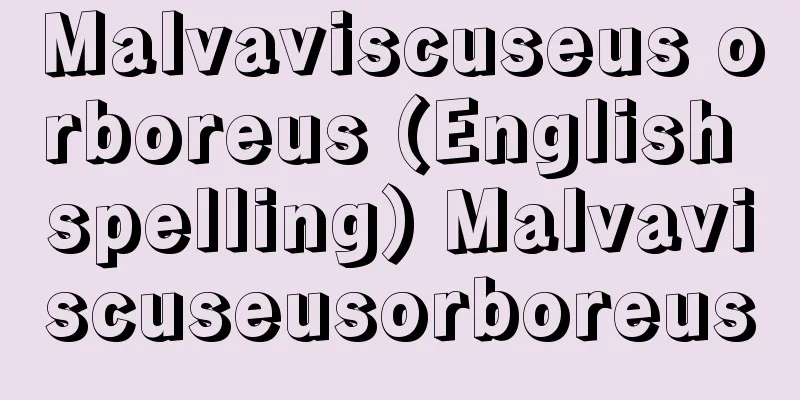Geophysical exploration

|
Geophysical exploration is a comprehensive technology that first uses computers to process data on physical phenomena arising from the physical properties of strata or rocks, measured from land, air, sea, or underground, and then interprets the results to determine the underground structural form and the physical properties of the media present within that structure, thereby providing basic data for obtaining information on underground resources such as oil, natural gas, coal, various metals, and geothermal energy, as well as the presence or absence of faults. While wells and tunnels directly collect underground structures and physical properties, providing one-dimensional or point-based data at the survey site, geophysical exploration obtains data indirectly via physical constants, which is a fundamental difference. Initially, it was called geophysical exploration because it was used in the United States and Japan to survey oil and metal resource deposits, but later, as its scope of application expanded to civil engineering, environmental, and disaster prevention fields, and as exploration methods such as processing and analysis of satellite data diversified, it became more common to call it geophysical exploration. Geophysical exploration techniques are classified into "forward problems," in which unknown underground structures are explored and the field data obtained is processed by a computer to obtain a recorded cross section with an improved S/N (signal/noise) ratio, and "inverse problems," in which the recorded cross section is processed and interpreted to reconstruct an underground structure with improved resolution. There are various methods for geophysical exploration depending on the physical phenomenon used, and the targets of exploration are diverse, including resources, civil engineering and construction, the environment, and disaster prevention. Survey locations include not only land, but also very high altitudes by satellites, airborne by aircraft and helicopters, at sea by dedicated geophysical exploration vessels, and underground using wells. Target depths can reach the atmosphere, the surface of the earth, and several kilometers underground. When conducting geophysical exploration, the following points must be taken into consideration: (1) Understanding the physical properties of the target to determine the exploration method to be used (1) Universalization of 3D surveys [Yoshiaki Ashida] Elastic wave exploration method (seismic exploration method)A method of exploring underground structures and their physical properties by utilizing the underground propagation of artificially generated elastic waves. When elastic waves enter a boundary surface with different acoustic impedances, which is the product of the propagation speed and density, they are reflected and refracted at that boundary surface according to Snell's law. The refraction method uses the refracted waves that are refracted at a critical refraction angle and return to the surface, and is used particularly in civil engineering to estimate shallow structures and elastic wave propagation speeds. The reflection method uses the reflected waves that are reflected at the boundary between strata and return to the surface, and is used to explore deep underground structures extending up to several kilometers, mainly for exploration of resources such as oil and natural gas. P waves, which have the fastest propagation speed of any elastic wave and appear as the initial motion, are used, but S waves are also used in combination to determine Poisson's ratio, etc. [Yoshiaki Ashida] Gravity SurveyA method of exploring underground structures using differences in underground density distribution. Standard gravity values on Earth are the combined force of the gravitational force of the Earth and the centrifugal force caused by the Earth's rotation, but gravity values measured at points on the Earth's surface show gravity anomalies due to the fact that the Earth is not a perfect sphere, the centrifugal force caused by the Earth's rotation varies with latitude, and furthermore the elevation of the measurement point, the surrounding topography, and changes in the underground geological structure. Gravity values measured at the Earth's surface are corrected for ocean tides, latitude, topography, elevation, and the effects of mean sea level and the strata up to the measurement point, and the underground structure is estimated from gravity anomalies above mean sea level caused by the effects of underground density distribution. [Yoshiaki Ashida] Magnetic surveyA method of investigating the magnetic structure of the underground by utilizing differences in the distribution of magnetic materials underground. The Earth itself is considered to be one large magnet (geomagnetic field), and ferromagnetic rocks such as magnetite underground are magnetized in the same way that iron powder becomes magnetic when placed near a magnet. This is called induced magnetization. Igneous rocks also acquire residual magnetism as they cool in the geomagnetic field when they solidify. The magnitude of the magnetic field (magnetic field) is measured on the surface of the earth or in the air, and the underground structure is estimated from geomagnetic anomaly values corrected for the effects of the geomagnetic field. [Yoshiaki Ashida] Electrical explorationA method of investigating underground structures by utilizing differences in the distribution of electrical properties, primarily resistivity. Quantities such as electric potential and current due to artificial or naturally occurring electric fields are measured on the earth's surface, and the distribution of resistivity anomalies and polarization anomalies is analyzed to estimate the underground structure. For example, the resistivity method, which is one method of electrical exploration, passes a direct current through the ground, measures the voltage generated by the resistivity of the strata, and estimates the underground structure from the distribution of resistivity underground. [Yoshiaki Ashida] Electromagnetic SurveyA method of estimating the electrical structure of the underground by measuring the magnetic field (magnetic field) generated by the current flowing underground using the interaction between electric current and magnetism. When a primary magnetic field is generated by passing an alternating current through a coil and then passed underground, secondary eddy currents flow to interfere with the alternating magnetic field. The size and shape of the eddy currents depend on the resistivity distribution of the underground. These eddy currents themselves generate a magnetic field (secondary magnetic field). The primary and secondary magnetic fields are measured and analyzed to estimate the resistivity distribution of the underground. Various methods have been proposed for electromagnetic exploration, depending on whether natural or artificial electromagnetic fields are used, whether the purpose is horizontal or vertical exploration, and whether the domain is time or frequency. Subsurface radar, one method of electromagnetic exploration, transmits electromagnetic waves generated by an antenna from the surface into the underground, receives the reflected waves from the boundaries of strata with different dielectric constants with an antenna, and determines the underground structure. In addition, the MT (geomagnetic-telluric) method uses natural plane electromagnetic waves such as geomagnetic pulsations caused by the action of the solar wind and atmospheric electricity caused by distant lightning discharges as signal sources, and calculates the resistivity of the earth from the electric field measured on the surface and the magnetic field perpendicular to it. In the MT method, there is also a method of exploring shallow underground using artificial signal sources instead of natural signal sources. [Yoshiaki Ashida] Radiation detectionAn exploration that measures radiation (mainly gamma rays) emitted from natural radioactive minerals (radioactive minerals) contained in underground structures from the ground surface or from the air. It is used to directly explore radioactive deposits, and indirectly interpret the state of faults and landslides when radioactive minerals are contained in fault or landslide strata. [Yoshiaki Ashida] Heat and Temperature ProbeA method of estimating the state of underground heat sources by investigating geothermal phenomena such as geothermal gradient, heat flow, and heat dissipation. It is applicable not only to hot spring veins and hot spring aquifers, but also to geothermal development such as geothermal power generation. [Yoshiaki Ashida] Remote SensingAn exploration method that utilizes phenomena such as reflection, scattering, and radiation of electromagnetic waves from the earth's surface using various sensors mounted on artificial satellites. It is also used as an exploration method to monitor changes in the condition of the earth's surface by utilizing the homing nature of artificial satellites. [Yoshiaki Ashida] GeotomographyGeotomography is a technology that uses various methods to survey the underground and visualize its internal structure with high accuracy. It is a method of estimating underground structures using the concept of CT scans, which have proven extremely effective in the field of medical diagnosis. It is a technology that obtains one-dimensional distribution of projection data in many directions by observing the two-dimensional distribution of physical properties in a survey cross section surrounded by seismic points and receiver points or current electrodes and potential electrodes at many points with different propagation directions, and then uses this to reconstruct the two-dimensional distribution of physical properties in the survey cross section. [Yoshiaki Ashida] "Remote Sensing: Satellite Photography, Analysis and Applications of Earth Resource Exploration," edited by the National Aeronautics and Space Administration and translated by Yasuhiro Kuroda (1977, Asakura Publishing)" ▽ "Physical Exploration: From Resource Development to Natural Recognition," by Masami Hayakawa (1982, NHK Publishing)" ▽ "Physical Exploration of Soil and Foundations," edited by the Editorial Committee for Physical Exploration of Soil and Foundations (1985, Geotechnical Society)" ▽ "Radioactivity Exploration Methods for Groundwater and Hot Springs," by Toshiro Ochiai (1996, Liber Publishing)" ▽ "Gamma Ray Exploration of Active Faults," by Toshiro Ochiai (1997, Liber Publishing)" ▽ "Physical Exploration for Slope Investigations: Landslides, Groundwater, and Bedrock Evaluation," edited by Yoshiaki Ito, Harushige Kusumi, and Atsuo Takeuchi (1998, Yoshii Publishing)" ▽ "Ground Visualization and Exploration Technology: Practical Application of High-Density Resistivity Exploration Method" edited by the Disaster Science Research Institute Tunnel Investigation Study Group (2001, Kajima Institute Publishing) [References] | | | | | |Atmospheric | | | | | | | | | | | | | |Geothermal | | | | field| |Geomagnetic | | | | | field| | | | | | | | | | | |Source: Shogakukan Encyclopedia Nipponica About Encyclopedia Nipponica Information | Legend |
|
物理探査とは、地層あるいは岩石のもつ物理的性質から生じる物理現象を、陸上、空中、海上あるいは地中から測定したデータに対し、まず電子計算機などを用いて処理した結果に解釈を加え、地下の構造形態およびその構造内にどういう物性値をもった媒質が賦存するかを解明し、その結果として石油・天然ガス、石炭、各種金属、地熱、などの地下資源や、断層の存否などの情報を得るための基礎データを与える総合技術である。坑井や坑道が、地下構造や物性値を直接的に採取することにより、調査地点における一次元あるいは点としてのデータを与えるのに対して、物理探査では、物理定数を介して間接的にデータを取得することにより、二次元、三次元あるいは線、面的な情報を与える点が根本的に相違する。 当初、アメリカや日本で石油や金属資源鉱床の調査に用いられたため、物理探鉱とよばれたが、その後、土木・環境・防災分野などへの適用範囲の拡大および人工衛星データの処理、解析などの探査手法の多様化により、物理探査ということが多くなった。物理探査技術は、未知の地下構造に対し探査を実施し、そこから得た現場データを電子計算機で処理してS/N(信号/雑音)比の向上した記録断面を得る「順問題」と、記録断面に処理と解釈を加え、分解能の向上した地下構造を再構築する「逆問題」に分類される。物理探査には、利用する物理現象により各種の方法があり、また探査対象も、資源、土木・建設、環境、防災などと多岐にわたる。調査場所も、陸上はもちろんのこと、人工衛星での超高度、航空機やヘリコプターによる空中、専用の物理探査船による海上、坑井を用いた地中にまで及ぶ。対象深度も大気圏、地表、地下数キロメートルにまで達する。 物理探査にあたっては、次の点に留意しなければならない。 (1)用いる探査手法の決定のために探査対象の物性値を把握すること (1)三次元調査の普遍化 [芦田 讓] 弾性波探査法(地震探査法)人工的に発生させた弾性波動の地中での伝播(でんぱ)現象を利用して地下構造およびその物性値を探査する方法。弾性波が、伝播速度と密度の積である音響インピーダンスの異なる境界面に入射すると、そこでスネルの法則により反射、屈折する。臨界屈折角で屈折し、地表に戻ってくる屈折波を利用するのが屈折法で、とくに土木分野で浅部構造と弾性波伝播速度を推定するのに用いられる。地層境界で反射して地表に戻ってくる反射波を利用するのが反射法であり、数キロメートルにまで及ぶ地下深部構造を探査し、主として石油・天然ガスなどの資源の探査に用いられる。弾性波としては伝播速度がもっとも速く、初動として現れるP波を用いるが、S波も併用してポアソン比などを求めることも行われている。 [芦田 讓] 重力探査地下の密度分布の相違を用いて地下構造を探査する方法。地球上の標準的な重力値は、地球による引力と地球が自転していることにより生じる遠心力との合力であるが、地表で測点する重力値は、地球が完全な球でないこと、地球の自転による遠心力が緯度により異なること、さらに測定点の標高、周辺の地形、地下の地質構造の変化によって重力異常を示す。地表で測定した重力値に対し、海洋潮汐補正、緯度補正、地形補正、標高補正、平均海水面と測定点までの地層の影響の補正を行い、地下の密度分布の影響による平均海水面上の重力異常値から地下構造を推定する。 [芦田 讓] 磁気探査地下の磁性体の分布の相違を利用して、地下の磁気的構造を調べる方法。地球自体が一つの大きな磁石(地球磁場)と考えられ、磁石に近づけた鉄粉がそれ自体磁石になるのと同じ原理で、地下にある磁鉄鉱のような強磁性の岩石も磁化している。これを誘導磁化という。また、火成岩も固結するときに地球磁場のなかで冷却するために残留磁化を得る。地表あるいは空中で磁界(磁場)の大きさを測定し、地球磁場の影響を補正した地磁気異常値から地下構造を推定する。 [芦田 讓] 電気探査地下構造の主として比抵抗としての電気的性質の分布の相違を利用して地下構造を調べる方法。人工的あるいは自然に発生している電界(電場)による電位や電流などの諸量を地表で測定し、比抵抗異常分布や分極異常分布を解析し、地下構造を推定する。たとえば、電気探査の一つの手法である比抵抗法では、地中に直流電流を流し、地層のもつ比抵抗値により生じる電圧値を測定し、地下の比抵抗分布から地下構造を推定する。 [芦田 讓] 電磁探査電流と磁気との相互作用を利用し、地中を流れる電流によって生じる磁界(磁場)を測定して、地下の電気的構造を推定する方法。コイルに交流電流を通じ一次磁場を発生させて地中に流すと、その交流磁場を妨げるように二次的な渦電流が流れる。渦電流の大きさや形状は地下の比抵抗分布に依存する。この渦電流はそれ自体、磁場(二次磁場)を発生している。一次磁場と二次磁場を測定し、解析により地下の比抵抗分布を推定する。電磁探査には、自然の電磁場を用いるか人工の電磁場を用いるか、水平探査か垂直探査を目的とするか、時間領域か周波数領域かなどにより各種の手法が提案されている。電磁探査の一つの手法である地中レーダーは、アンテナで発生させた電磁波を地表から地中へ入射し、誘電率の異なる地層境界からの反射波をアンテナで受信し、地下構造を決定する。また、MT(地磁気・地電流)法では、太陽風の作用による地磁気脈動や遠方の雷放電による空電などの自然の平面電磁波を信号源とし、地表で測定される電場とそれに直交する磁場から大地の比抵抗を求める。MT法では自然の信号源ではなく、人工信号源を用いて地下浅部の探査を行う方法もある。 [芦田 讓] 放射能探査地下構造内に含まれる天然放射性鉱物(放射能鉱物)から放出される放射線(主としてγ線)を地表あるいは空中から測定する探査。直接的に放射性鉱床を探査したり、断層や地すべり地層に放射性鉱物が含まれる場合には間接的に断層や地すべりの状態が解釈される。 [芦田 讓] 熱・温度探査地温勾配、熱流量、放熱量などの地熱現象を調べることによって地下熱源の賦存状態を推定する方法。温泉脈や温泉帯水層にとどまらず地熱発電などの地熱開発をも対象とされている。 [芦田 讓] リモート・センシング人工衛星に搭載された各種センサーにより、地表からの電磁波の反射、散乱、輻射(ふくしゃ)(放射)などの現象を利用する探査。人工衛星の回帰性を利用して、地表の状態変化をモニタリングする探査手法としても用いられる。 [芦田 讓] ジオトモグラフィジオトモグラフィとはさまざまな方法で地下を調査することにより、その内部構造を高精度に可視化する技術である。医療診断分野で顕著な効果をあげているCTスキャンの考え方を用いて地下構造を推定する方法をいう。発震点と受振点あるいは電流電極と電位電極とで囲まれた調査断面内の物性値の二次元分布を、伝播(でんぱ)方向の異なる多数の点で観測することにより、多くの方向の投影データの一次元分布を求め、それを用いて調査断面内の物性値の二次元分布を再構成する技術である。 [芦田 讓] 『アメリカ合衆国航空宇宙局編、黒田泰弘訳『リモートセンシング 人工衛星写真 地球資源探査の解析と応用』(1977・朝倉書店)』▽『早川正巳著『物理探査 資源開発から自然認識へ』(1982・日本放送出版協会)』▽『土と基礎の物理探査編集委員会編『土と基礎の物理探査』(1985・地盤工学会)』▽『落合敏郎著『地下水・温泉の放射能探査法』(1996・リーベル出版)』▽『落合敏郎著『活断層のガンマ線探査』(1997・リーベル出版)』▽『伊藤芳朗・楠見晴重・竹内篤雄編『斜面調査のための物理探査――地すべり・地下水・岩盤評価』(1998・吉井書店)』▽『災害科学研究所トンネル調査研究会編『地盤の可視化と探査技術――比抵抗高密度探査法の実際』(2001・鹿島出版会)』 [参照項目] | | | | | | | | | | | | | | | | | | | | | | | | | | | | | | | | | | | | | | | | | | | | | |出典 小学館 日本大百科全書(ニッポニカ)日本大百科全書(ニッポニカ)について 情報 | 凡例 |
Recommend
visual cell
…In addition, some vertebrate animals, such as pr...
Mauritania - Islamic Republic of Mauritania
A country in northwestern Africa, on the western ...
Daumen
…However, the actual unit of measurement was also...
Voltage divider
When measuring high voltage, it is necessary to di...
Evenki language - Evenkigo (English spelling)
The language of the Evenki people, who are Tungusi...
Kantaka Chetiya Tower
...The Thupārama Stupa is a historic tower dating...
Oberland, JF - Oberland
...In today's Japan, it is one of the child w...
jiffy pot
...Large pieces of potting soil or pumice are pla...
Circulatory regulation - control of the circulation
Blood circulation is regulated and controlled by t...
Gyokuju Plateau
…The Qilian Mountains are a parallel mountain ran...
Minimum wage system
A system that sets minimum wages through laws and...
Soy milk - tounyu
Nutrition, Functions & Cooking Tips Dairy pro...
Plunkett, Sir Horace Curzon
Born: 24 October 1854, Sherborne, Gloucestershire ...
Sea Dayak
…the Sea Dayak are a Proto-Malay people who live ...
Babylon the Great - Babylon the Great
...After that, in the chaos of the 3rd century, t...



![Kumanoyu [Hot Spring] - Kumanoyu](/upload/images/67cb6be6e1bc4.webp)





